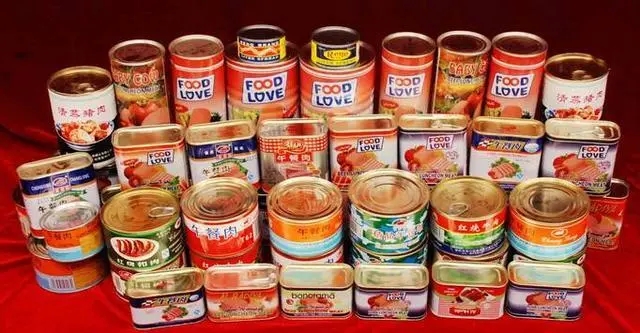Recently, a news about "China's canned food hot overseas" rushed to the hot search. Data from the China Canned Food Industry Association shows that in 2022, China's canned food exports reached 3.125 million tonnes, with exports valued at US$6.89 billion (about RMB 47.3 billion), up 12% and 22% year-on-year respectively, both hitting new highs in recent years.
The international canned food consumer market is very mature. Data shows that, as a daily diet of consumer goods, the annual per capita consumption of canned food in Europe and the United States can reach 21 kg to 33 kg, the total annual global supply of canned food nearly 50 million tons, more than 2,500 varieties, huge consumption potential. 2022 global exports of canned food is about $ 26 billion, in 2023 the global value of canned food is expected to reach $ 118 billion. How is China's canned food standing firm in the choppy international market?
"Canned food is the first of China's food categories to enter the international market, and the quality of the product early and international food, over the years to meet market demand, expand foreign trade, service "three agricultural" and other aspects play an important role." Liu Youqian, director of the China Canning Industry Association, said that from the category point of view, China's exports to overseas markets are mainly canned fruits and vegetables, including canned citrus, canned peaches, canned mushrooms, canned asparagus and other canned goods in the world occupy a larger market share. In addition, canned tomato paste as well as canned bamboo shoots are also the main products of China's canned fruit and vegetable exports.

According to reports, in the 1950s, China's canned goods first went out of the country, starting with a small amount of canned fruit, the variety and quantity increased year by year. At present, China is the world's leading producer and exporter of canned goods. According to statistics, from 1950 to 2019, the cumulative output of China's canned food industry was approximately 190 million tonnes, of which 34% was exported, with exports valued at over US$80 billion.
Recently, inflation in some overseas countries and regions has gone up, leading to a sharp rise in local food prices and a rise in consumer hoarding demand, pushing China's canned food products to sell well overseas in many countries and maintaining growth in export volume.
Chinese canned food in overseas hot sales, but also with the industry to continuously improve the quality of development. In recent years, China's canned food industry targeting the goal of high-quality development, is undergoing changes and restructuring of the industrial chain. At the production end, the canning industry chain has been extended and integrated, the full sequence of canned quick-frozen and preserved industry development, industry concentration has increased, and the supply chain integration and management capabilities of enterprises are also increasing requirements. Some industry experts said that as more and more production enterprises into the supply chain at home and abroad, the elimination of intermediate links, directly with the retail terminal docking will become a trend.

On the consumer side, the canning industry is characterised by increasing overall demand. In terms of category, canned products such as flexible packaging are becoming one of the key trends in the industry, with huge scope for growth. In terms of innovation, there is a greater focus on health indicators such as vegetarian, gluten-free, low-sugar, non-GMO and nutritional value ratings. In terms of personalisation, small portion sizes of canned food for "one person" and sugar-free and low-sugar canned food for young women and special groups are popular.
Industry experts believe that China's canned food industry in the new round of international trade competition to maintain and expand the industry's comparative advantage in trade, must be a multi-pronged approach to China's canned food industry into a labour-intensive, technology-intensive, resource-intensive both composite advantage industries. Enterprises need to continue to increase the export of quality products, in the product, process and management of continuous innovation, to promote the industry into the transformation and upgrading, upgrading and efficiency, high-quality development of the positive track.

